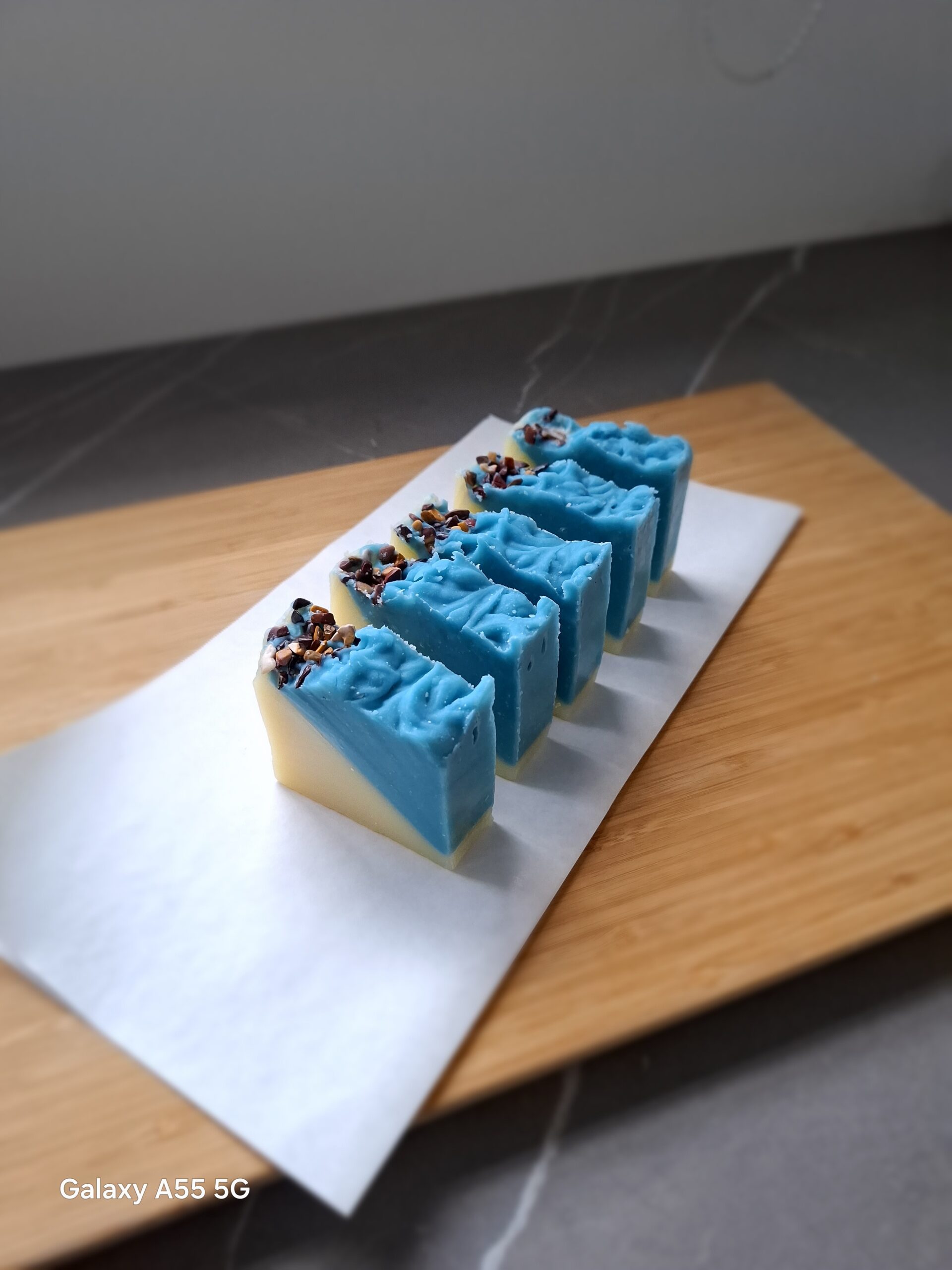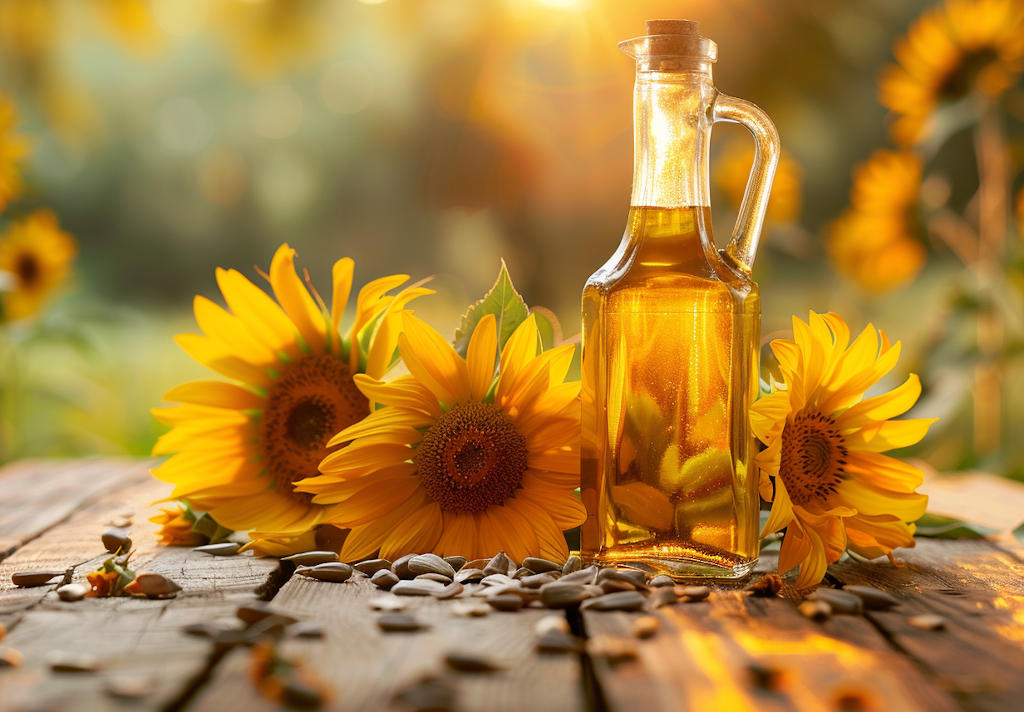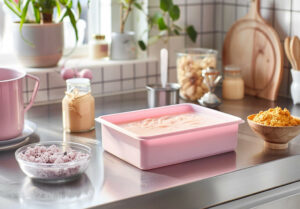Solving minor accidents in cold saponification

Cold saponification is an exciting artisanal method for creating your own soaps. However, even the most experienced soap-makers sometimes encounter little unforeseen problems.
Whether you’re just starting out or already have years of experience, it’s always good to know how to solve these little glitches!
Here’s an overview of common problems you may encounter and how to solve them.
1. Nothing happens, even after mixing the soda with the oils
You mix, you wait… but nothing! The oils float, the soda sinks to the bottom, and saponification seems non-existent (the oils and soda don’t mix!).
This sometimes happens, and is often due to a problem in the recipe:
– or the proportions of soda and oils are not correct,
– or a missing or incorrect ingredient has been used.
Unfortunately, this soap is destined for the garbage can. But don’t panic – that’s what learning is all about. Start again with a more reliable recipe!
2. My soap has little dots
It’s a classic! Let’s see what those little dots mean:
- Black or colored spots: These are often due to poorly mixed colorant. Don’t worry, your soap is perfectly usable.
- White spots: Beware, this could indicate undissolved grains of soda, making the soap caustic. It’s best to do a pH test to be sure. If the pH is good, it could be due to ingredients such as shea butter, which can leave white marks. If, on the other hand, the test reveals that the soap is caustic, it’s time to throw it out (see our article: pH in our Home Soaps: What is it? – Planete-Savons)
3. Yellow spots appear and my soap smells bad
Those nasty yellow dots are a sign of rancidity. The soap has probably not stored its oils properly, and has taken on an unpleasant odor.
Good news: it’s still usable, but it won’t be the most glamorous soap in your bathroom.
4. A dark area in the center of the soap
This may worry you, but it’s simply the result of a partial freezing phase. The soap has overheated slightly, and the center has gelled, forming a darker area. This often happens when you add honey to the trace, or any sugar-based addition (beer, sugar, honey, milk…).
Don’t worry, it’s not caustic and remains perfectly usable. Just wait until the end of the treatment.
A little tip: when I make beer soap, I freeze the degassed beer in an ice-cube mould. When the cubes are frozen, I add them very gently to the soda beads.
To make sure the liquid lye doesn’t overheat, I place the glass beaker in a large bowl (glass or stainless steel) with cold water! This way, my liquid soda doesn’t rise above 50 degrees, the beer’s sugar is preserved and my soap is exceptionally mild! For those of you wondering what kind of beer…the simplest possible…the blonde beer that “men know why”!
5. My soap has a crater
There are two possible situations:
- The crater is dry, with no crystals or liquid: this is a complete gel phase. All’s well, your soap is perfectly usable.
- The crater contains liquid or crystals: This is a concern. This means that the soap has shifted phase, creating pockets of soda. Unfortunately, it’s caustic, so throw it out.
6. A fine layer of white powder appears on my soap
It’s probably soda ash, which forms when soda comes into contact with air. Nothing to worry about here, just wipe or rinse before use.
For my part, I cover the soaps with a sheet of greaseproof paper after pouring them into the molds. This paper allows the water to evaporate and prevents the famous white streak on the soaps.
7. My soap has holes
Holes can appear in two ways:
- Empty holes: These are air bubbles that have formed when the soap paste was mixed. No problem, your soap is usable.
- Holes filled with liquid, powder or crystals: This is a sign of a phase shift with soda pockets. If this is the case, the soap is caustic and should be discarded.
8. My soap is too soft
Soft soap can be caused by several factors:
- One problem with the recipe: perhaps too much liquid oil and not enough butters or solid fats.
- Room temperature too low: saponification may have stopped during the process.
- Demolding too quickly or curing not long enough: simply allow the soap time to harden.
- Solution: Put your soaps in the oven at a temperature of 50° for one hour. Turn off the oven and leave your soaps for 24 hours. This will allow the saponification process to finish its work in peace.
9. Water droplets appear on my soap
This can happen if the room where the soap dries is too damp. Don’t panic, just wipe off the drops and replace the soap in a dry place to finish its cure.
That’s why our Drying Box makes so much sense! This little box keeps your soap safe, and the cardboard absorbs moisture.
10. My soap has transparent marbling
If you see a beautiful river of glycerine, don’t worry. It’s a natural phenomenon that in no way affects the quality of your soap. It’s completely ready to use!
Cold saponification is a delicate art, requiring patience and perseverance. Every mistake is an opportunity to learn and improve technique.
Whether you’re a novice or an experienced soap-maker, these little worries are simply steps on the road to mastery.
Don’t be discouraged, try out new recipes, and above all, have fun!
Remember: a good homemade soap is always better, even with a few small imperfections!



0 Comments